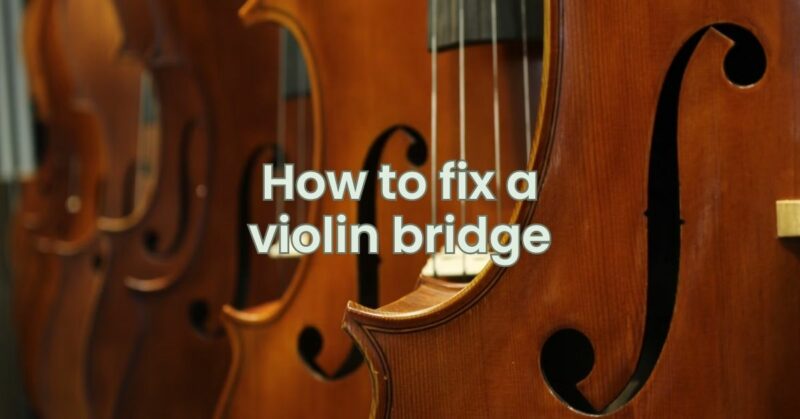The violin bridge is a crucial component of the instrument, responsible for transmitting the vibrations of the strings to the body of the violin, ultimately producing its beautiful sound. Over time or due to changes in environmental conditions, the bridge can shift, tilt, or even warp, affecting the violin’s playability and sound quality. While fixing a violin bridge may seem intimidating, with the right guidance and approach, it can be accomplished safely and effectively. In this article, we will provide a step-by-step guide on how to fix a violin bridge, ensuring that your instrument remains in optimal playing condition.
- Gather the Necessary Tools
Before attempting to fix a violin bridge, ensure you have the necessary tools ready. You will need a set of violin bridge clamps, a pencil, a bridge setter, and a fine-tuner. Having these tools on hand will make the process more straightforward and efficient.
- Loosen the Strings
To avoid damaging the violin or the bridge during the repair process, you must first loosen the tension of the strings. Gently turn the corresponding fine tuners or pegs to slacken the strings, ensuring there is minimal tension on the bridge.
- Remove the Bridge
With the strings loosened, carefully lift the bridge off the violin. Use your fingers to support the bridge while removing it to prevent any sudden shifts or damage to the soundpost or the instrument’s top plate.
- Inspect the Bridge
Thoroughly inspect the bridge for any visible issues such as warping, tilting, or excessive wear. Look for signs of uneven wear on the feet of the bridge, which may affect its stability and contact with the violin’s top plate.
- Realign the Bridge
If the bridge appears warped or tilted, you can attempt to realign it. Place the bridge back onto the violin, ensuring the feet are in the correct position on the violin’s soundholes. Use a bridge setter or the pencil to guide you in positioning the bridge upright and in the right alignment with the fingerboard.
- Check the Bridge Height
The height of the bridge affects the playability and sound projection of the violin. Ensure that the bridge is set at the appropriate height by using a ruler or a bridge setter to measure the distance between the violin’s top plate and the lowest point of the bridge. The standard bridge height is usually around 33-35 mm from the top plate.
- Align the Strings
Once the bridge is in the correct position and height, align the strings with the fingerboard and tailpiece. Ensure that the strings run smoothly through the bridge grooves and over the nut. Make any necessary adjustments to ensure proper alignment and spacing between the strings.
- Apply Gentle Pressure
With the bridge in its correct position and the strings aligned, gently press down on the bridge with your fingers while tightening the strings. This step will ensure the bridge makes proper contact with the violin’s top plate and stays in place during the tuning process.
- Tune the Violin
Gradually tighten the strings using the fine tuners or pegs while maintaining even pressure on the bridge. Tune the violin to the desired pitch, checking the bridge alignment and making any final adjustments if necessary.
Conclusion
Fixing a violin bridge may seem daunting, but with the right approach and tools, it can be accomplished safely and effectively. Always remember to loosen the strings before attempting any repairs to avoid damaging the instrument. Inspect the bridge carefully for any visible issues and realign it if needed. Ensure the bridge is at the appropriate height for optimal playability and sound projection. Align the strings with the bridge and fingerboard, and apply gentle pressure on the bridge while tuning the violin. By following these steps, you can confidently fix a violin bridge, allowing your instrument to produce its beautiful and resonant sound once again. If you encounter any difficulties or have concerns about repairing the bridge, do not hesitate to seek assistance from a qualified violin luthier or instructor.


